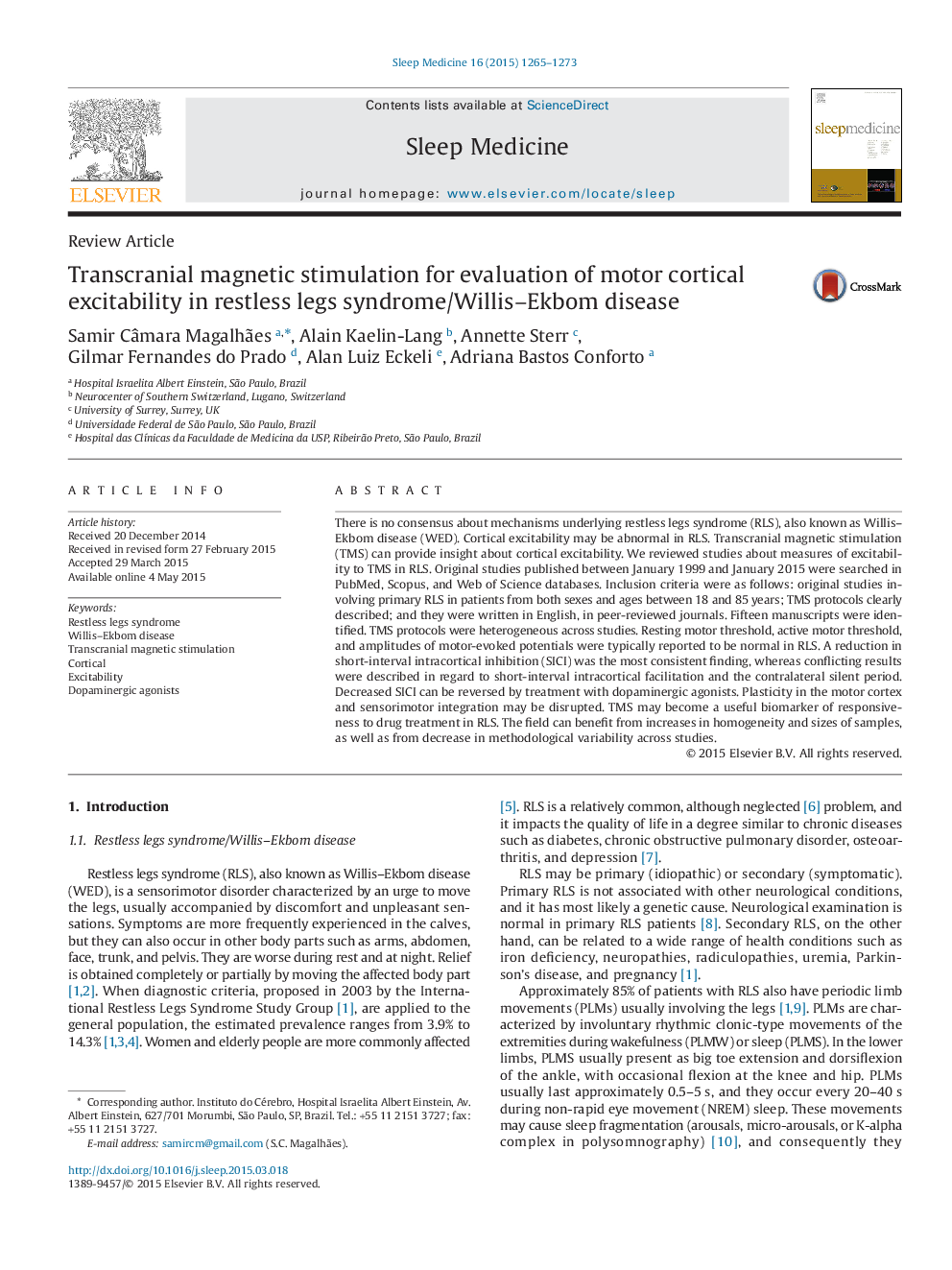| کد مقاله | کد نشریه | سال انتشار | مقاله انگلیسی | نسخه تمام متن |
|---|---|---|---|---|
| 6060516 | 1200231 | 2015 | 9 صفحه PDF | دانلود رایگان |
- Transcranial magnetic stimulation (TMS) may become a useful tool to evaluate motor cortical excitability in restless legs syndrome (RLS).
- The most consistent change in excitability in patients with RLS is decreased short-interval intracortical inhibition (SICI).
- Higher methodological homogeneity and sample size are needed in TMS studies in RLS.
- Collaborations between clinicians and researchers will be key to advance the field.
There is no consensus about mechanisms underlying restless legs syndrome (RLS), also known as Willis-Ekbom disease (WED). Cortical excitability may be abnormal in RLS. Transcranial magnetic stimulation (TMS) can provide insight about cortical excitability. We reviewed studies about measures of excitability to TMS in RLS. Original studies published between January 1999 and January 2015 were searched in PubMed, Scopus, and Web of Science databases. Inclusion criteria were as follows: original studies involving primary RLS in patients from both sexes and ages between 18 and 85 years; TMS protocols clearly described; and they were written in English, in peer-reviewed journals. Fifteen manuscripts were identified. TMS protocols were heterogeneous across studies. Resting motor threshold, active motor threshold, and amplitudes of motor-evoked potentials were typically reported to be normal in RLS. A reduction in short-interval intracortical inhibition (SICI) was the most consistent finding, whereas conflicting results were described in regard to short-interval intracortical facilitation and the contralateral silent period. Decreased SICI can be reversed by treatment with dopaminergic agonists. Plasticity in the motor cortex and sensorimotor integration may be disrupted. TMS may become a useful biomarker of responsiveness to drug treatment in RLS. The field can benefit from increases in homogeneity and sizes of samples, as well as from decrease in methodological variability across studies.
Journal: Sleep Medicine - Volume 16, Issue 10, October 2015, Pages 1265-1273
